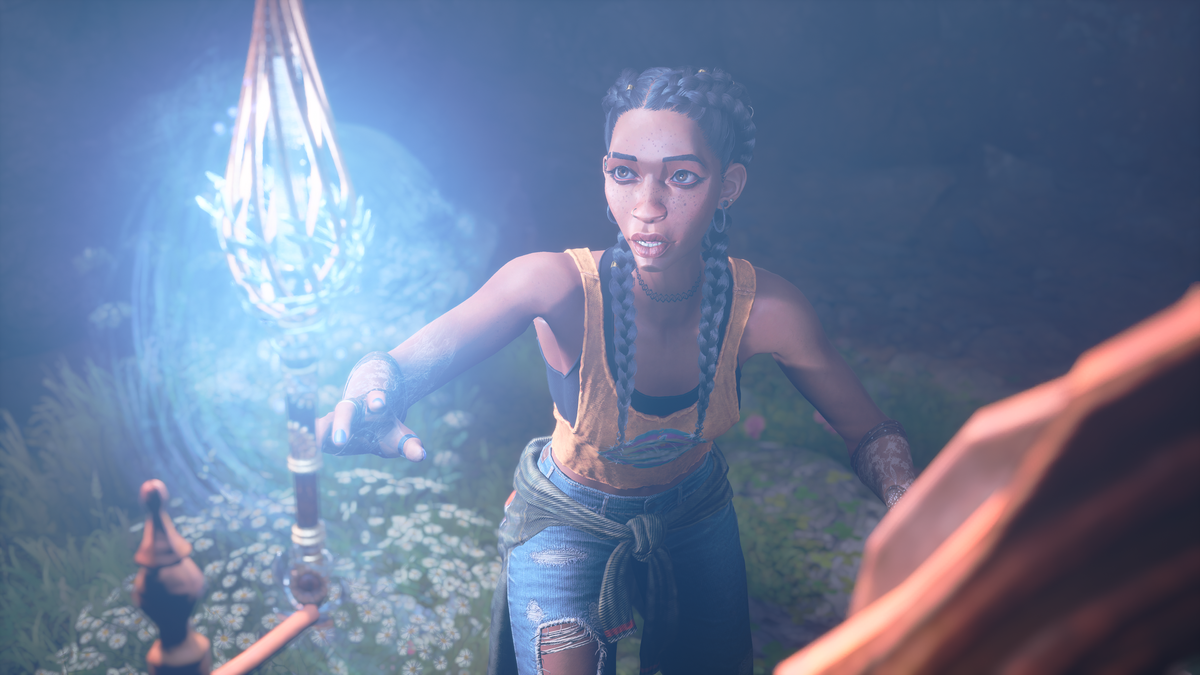
To say that I was excited to dive back into the world of South of Midnight would be an understatement. The brief glimpse we were given during our hands-on preview solidified my opinion that this game wasn’t one I could just let pass by. Well, thanks to Compulsion Games and Xbox, we were able to get our hands on the game again, and we’ve got loads to tell you. Compulsion Games, creators of Contrast and We Happy Few, have created something truly special.
A massive hurricane hits Prospero and sweeps Hazel’s home away with her mother inside. All her years of being a track star proved insufficient as she chased after her house as the flood waters carried it away. Hazel blames herself for not being able to rescue her mother but that doesn’t stop her from wanting to get her mama back. Hazel’s journey, and the story that unfolds, is one of empathy and healing, as Hazel will face not only her own struggles, but also those of the people around her.
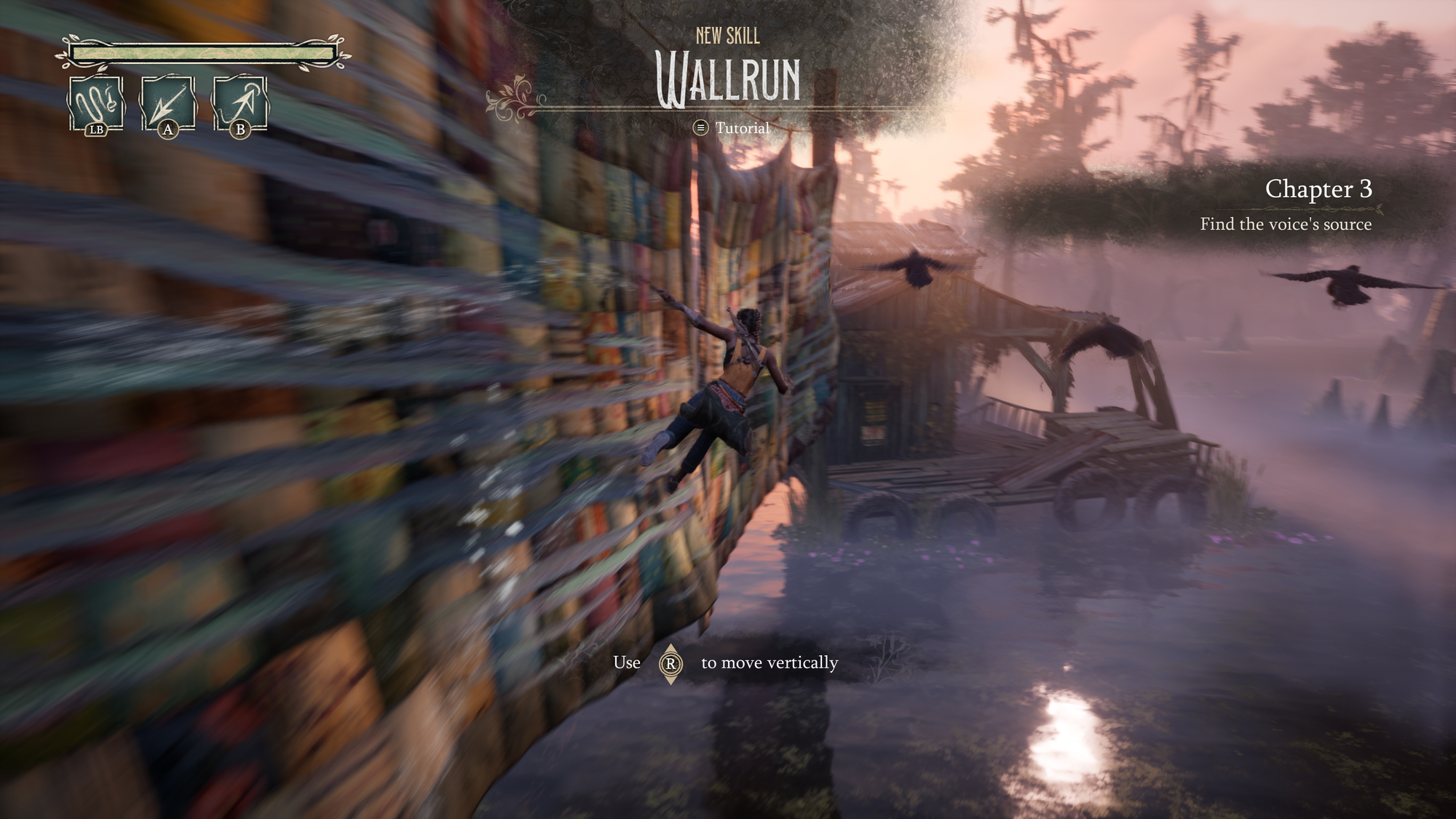
Hazel is a Weaver, a healer of sorts. Weavers have the power to wield Strands and use their power to repair the Grand Tapestry, the fabric of the universe that connects all things. The Grand Tapestry around Prospero has become warped and torn from the trauma that plagues its people. If Hazel wants to save her mama, she has to help reconcile that trauma.
The damaged Strands of the Tapestry have resulted in Stigma, a sort of infection that taints the area around it, much like how stigma in the real world is like a disease in the community. As Hazel navigates through the different parts of Prospero, she’ll have to unravel the Knots that surround the Stigma, but it’s not going down without a fight. Stigma is full of Haints, angry creatures that screech and scratch and otherwise try to thwart Hazel’s efforts. Once all the Haints are gone, the Knot can be unraveled and the Stigma extinguished.
The gameplay truly complements the storytelling. You’ll use a combination of platforming, exploration, and combat along your journey that has thankfully been kept fairly straightforward. There are no crazy button combos to have to memorize, nor an extensive skill tree to scale (there is a skill tree, it’s just not that big). The controls, both in exploration and combat, aren’t anything special, but are still fun and satisfying to execute. The primary tool that Weaver’s utilize are Hooks, which are used to interact with Strands. In combat, they are used for simple melee attacks and to unravel Haints and Knots. Hazel’s Distaff lets her see Echoes of the past, and the Spindles allow her to cast different spells.
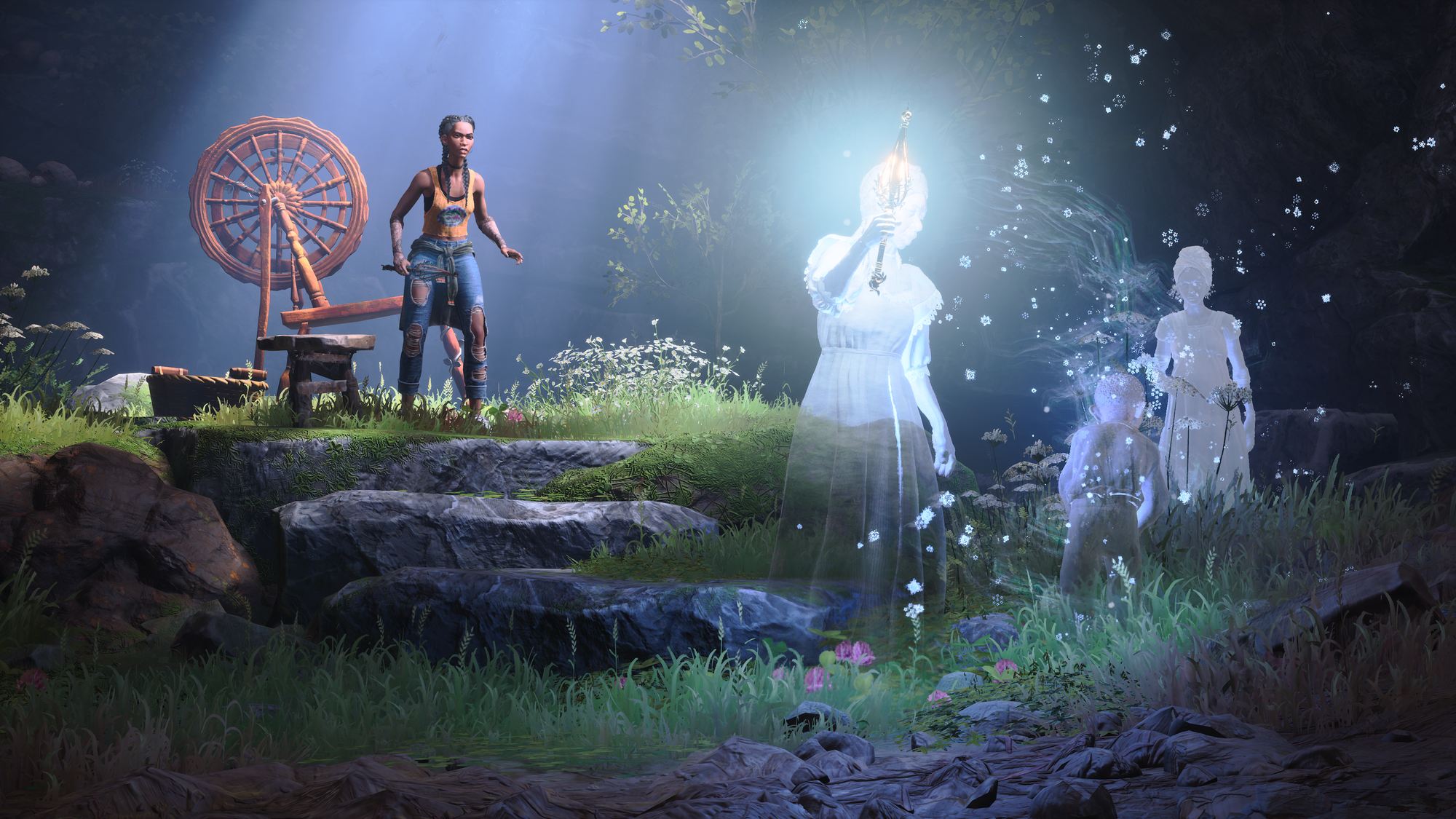
In each area, there are four Knots that must be unraveled. Each knot tells another part of the story for whoever’s trauma is being repaired. The pain from each part of the story is then collected in a bottle and taken to a bottle tree, which repairs the threads of the Tapestry.
Clearly, the game is loaded with symbolism and metaphors for things like empathy, trauma, compassion, and healing, things that aren’t tangible, but can still be felt. These terms are given a visual representation that the player is then able to interact with and conquer. This method of storytelling is very powerful and moving, allowing players to see things like growth and regeneration after clearing the Stigma.
South of Midnight takes place in the Deep South of the United States, resembling places like southern Louisiana with its bayous, Cajun culture, and iconic southern charm. It’s a beautiful setting full of color and life. The threads of life are beautifully woven together here.
The many characters you meet throughout Hazel’s journey all have a deep story behind them, some with seriously dark twists that you’d never see coming. In the end, I found myself rooting for even the seemingly bad guys, as they were also facing battles that no one else could see…no one except Hazel. One of those characters is Hazel’s companion, Catfish, who helps her traverse Prospero, guiding and aiding her at every step after she rescues him from a predicament of his own.

South of Midnight also features characters unseen by the player: the music. As you begin a section, you’ll hear themes start to play as you move forward. As you get further into the mission, the music builds alongside you. This builds into a big musical number generally featuring a main singer and then a chorus of children at different times. This is magnificently featured throughout the game with original tracks built in specifically for each section of the game explaining each “Stigma” and the story you’ve been collecting in the bottle.
The music features major genres from the Deep South including blues, jazz, ragtime, big bang, and country.
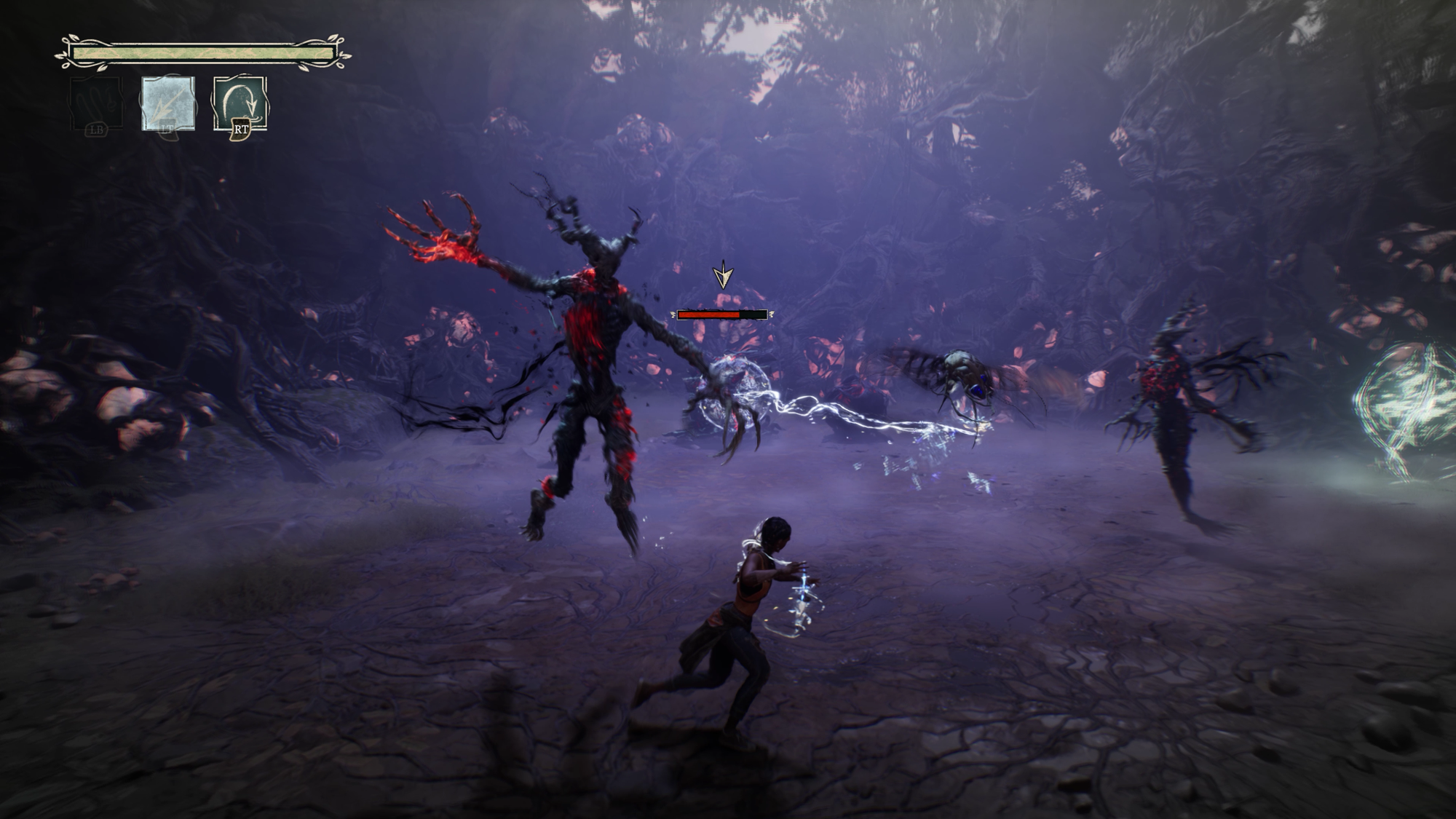
The other amazing aspect of the music is the system Chris Fox, creative director, and his team made for South of Midnight. It is a system that allows the music to grow with the player’s gameplay style. It will stop or slow when you do, or speed up if need be.
This allows different players to play the way they want without ruining the fun of the music. For instance, I explore… a lot. Which in most games leads to me missing dialogue, music queues, and sometimes even big combat moments are ruined. With this system, I can explore to my heart's content and the music will be ready for me when I’m done.
The charm doesn’t stop there, however, as the art and animation of South of Midnight also shines through. The game uses stop-motion animation combined with an almost clay-mation art style, which looks absolutely incredible. It threw me off a little at first – I thought I was experiencing dropped frames – but this is such a unique style that works surprisingly well in a video game. For those who aren’t a huge fan of the stop-motion, it can be disabled in the settings, but only for gameplay, not the cinematics.
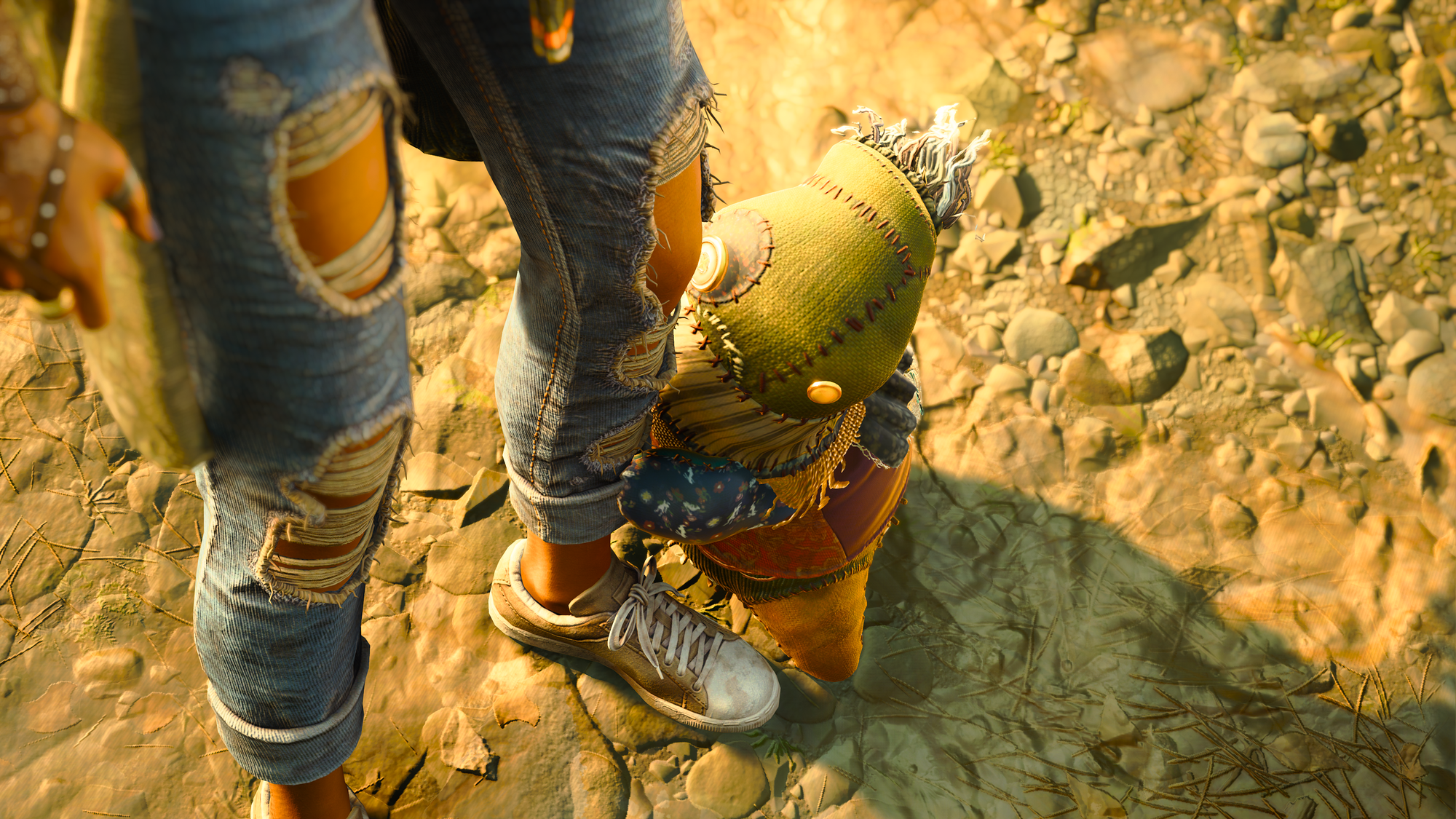
The game features a handful of difficulty modes that range from focusing on exploration and storytelling to making the combat more of a challenge. I prefer a more balanced approach, taking in the scenery and learning about the world around me while combat also presents a decent challenge. That is the default, but switching between difficulty modes can easily be done from the settings.
South of Midnight is a linear game that’ll take the player anywhere from 15-20 hours to complete, depending on how much you decide to go hunting for all the hidden bits of lore as well as Floofs, the currency used to unlock new skills and spells. It’s worth taking a peak around every corner, in the trees, and even down a steep ledge because you never know what you’ll uncover.
South of Midnight
Excellent
South of Midnight is a masterclass in picking a theme and sticking to it all the way through. The usage of music as a character world/lore enhancement is one of the best examples out there of what TO do. From the character models, to the music, and beyond; South of Midnight shows how to build a game around a style and committing fully.
Pros
- Masterful storytelling
- Unique and creative stop-motion animation
- Usage of music as a character
Cons
- Nothing to report!
This review is based on an early Xbox copy provided by publisher. South of Midnight comes out on April 8, 2025.
